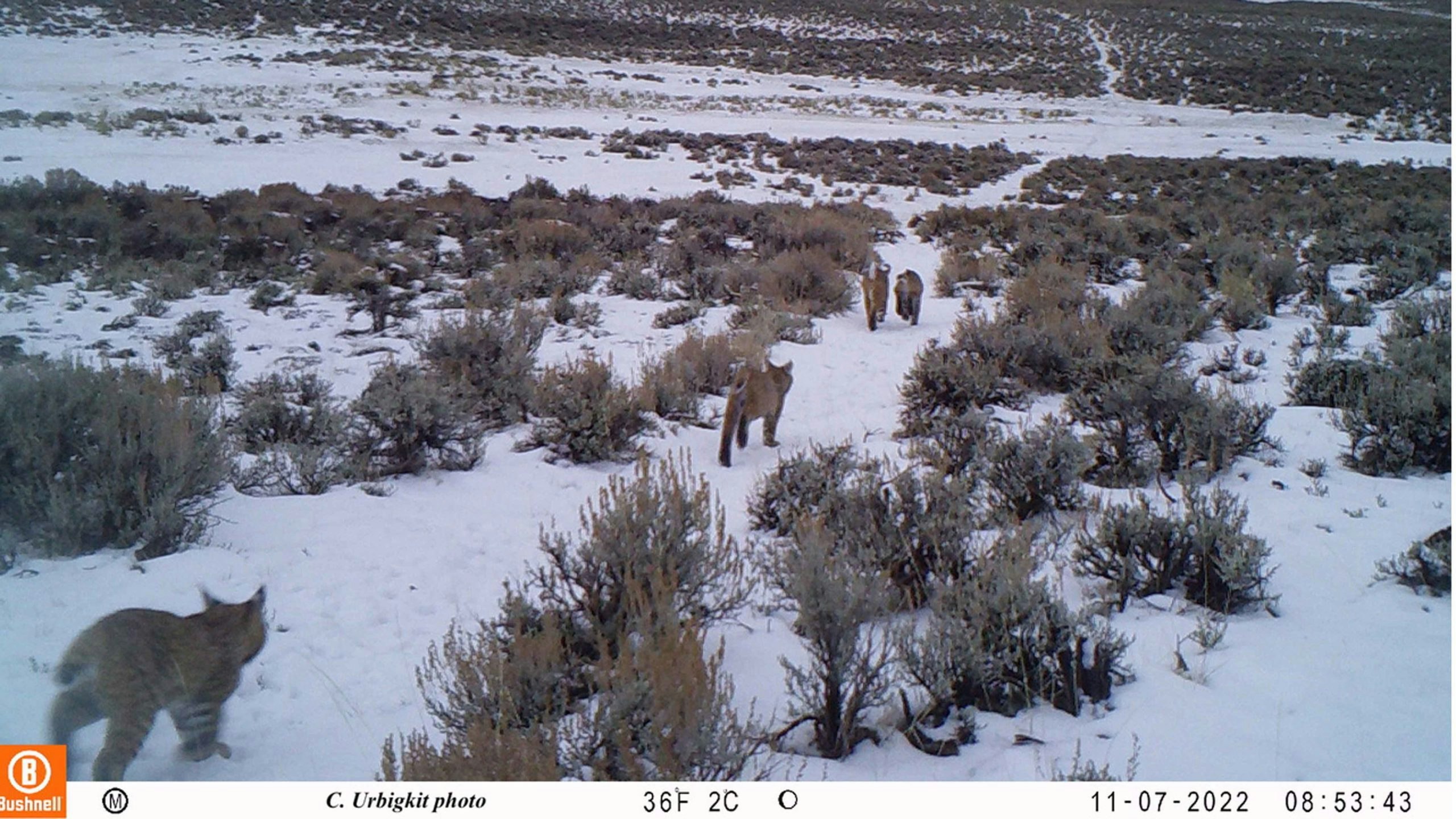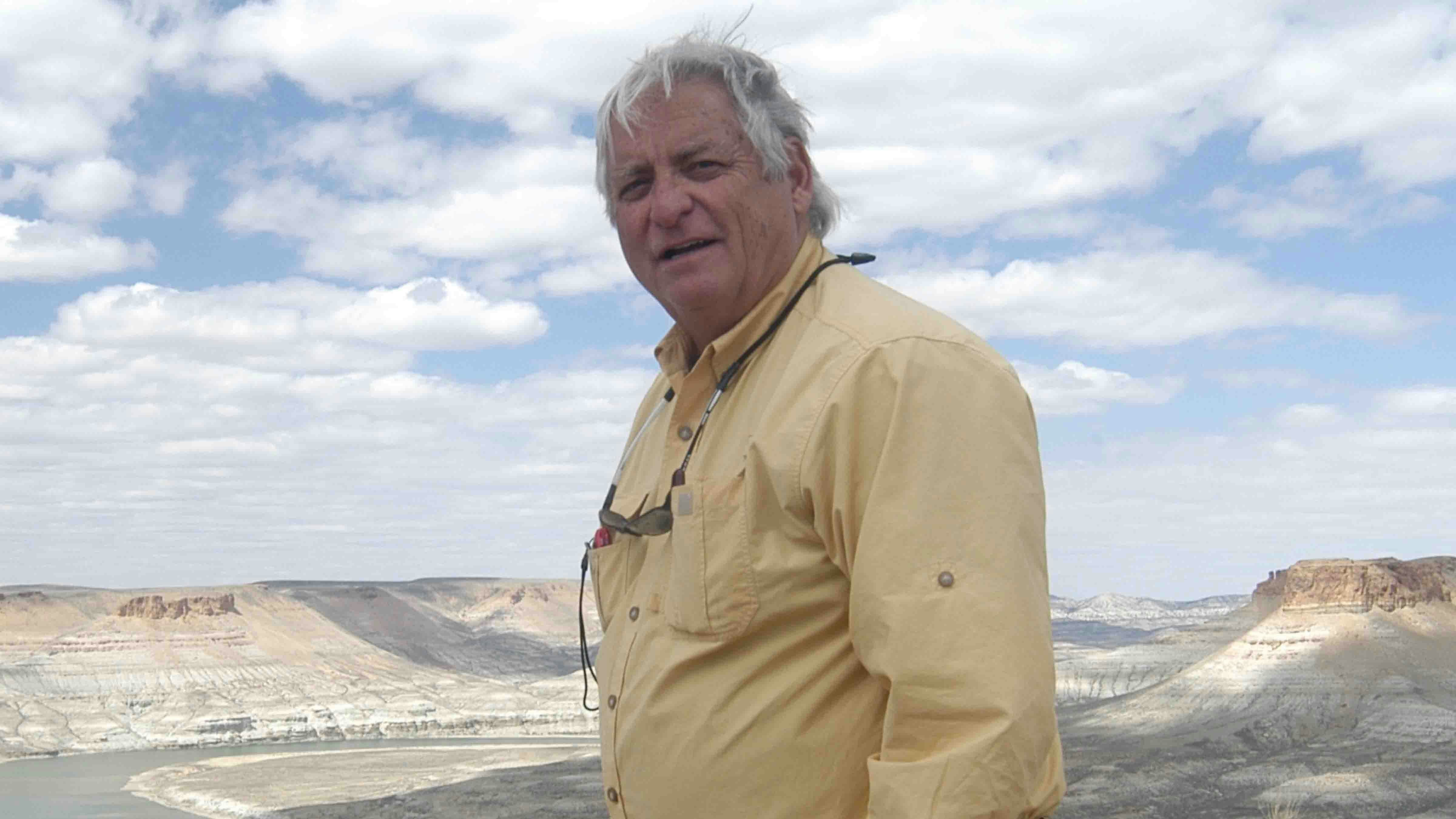Every morning at this time of year I go outside to do my check-ins, having a look around. I check in on all the livestock and livestock guardian animals, and replenish food, mineral and water as needed.
As I drive across the sagebrush flat that is covered with a few inches of snow, I let Fly the herding dog out to run in front of the truck. Her ears prick up when we approach a band of pronghorn antelope, but she sticks to running the two-track road in front of the truck, although I know she’d love to have a chance at herding those speedsters.
Some of the antelope use our presence as an excuse to break into a run, but others stand and watch us pass, aware of our routine. Usually the group that runs eventually criss-cross back and forth in front of the truck, demonstrating they are the fastest animals on the flats, and frustrating poor Fly.
As we turn to start up a hill, I place Fly back in the cab of the truck so we cause as little disturbance as possible to the mule deer browsing in the morning sunshine. Some of the muley bucks are far more interested in a particular doe to be concerned with my slow roll past them as I check the game cameras and look for tracks in the sandy road.
My travels around the ranch bisect a major wildlife migration corridor. The corridor has been busy the last few weeks, with recent snowstorms bringing mule deer out of the mountains and streaming through this mixture of private, state and federal lands.
I pause on a hill, watching mule deer does and fawns passing underneath the boundary fence, with its smooth bottom wire stapled high enough on the post that it doesn’t hinder the migration. The does and fawns go under, but I watch as two muley bucks effortlessly leap over the top.
At this fence crossing, the deer stick to a single path that has been pounded into hard dirt by the thousands of hooves that travel this route every spring and fall, year after year. The path traverses through the brush above an outcrop of jagged rocks, and once the deer pass these rocks, they slow down and spread out to nibble on sagebrush and other native vegetation. They move slowly here, taking their time as they forage and continue to navigate the sagebrush and bitterbrush-covered hillsides above the flat.
These foothills are known as a stopover for deer moving along the migration route. Mule deer from the Red Desert segment of this Sublette deer herd travel an average one-way distance of about 150 miles in their fall migration, taking about a month in their movement to wintering grounds. Not all the animals using this route will travel that far, with some moving just a few more miles to winter in the sagebrush highlands nearby.
This segment of trail is busy with does and fawns throughout the day, with bucks mixed in but not as plentiful. Our game cameras reveal that most bucks make their way through the crossing during the night. Fortunately, nearly all the deer our cameras have captured this year appear to be going into winter in excellent physical condition.
Just below the deer’s well-beaten path to the fence crossing is a grassy meadow covered in elk tracks. The last few nights have been colder, with continued snow at higher elevations, prompting the elk to begin shifting their movements as well.
During the night, the animals cascade down to lower elevations in big groups, with some turning to the southeast to cross the river as they move toward the desert. Other groups of elk take different routes, with some coming down out of the timber through a gate in a small drainage that is left open to provide for safe passage. Others traverse along a high ridge before dropping down into the next drainage.
This migration occurs within a broad corridor. Within that corridor is a network of game trails, trail segments, and two-track roads used by the animals as they migrate. The elk and deer use the same broad corridor, and even some of the same paths in the corridor, but in this section the elk follow the sandy road before spilling out onto the meadow. In contrast, the deer use a portion of the road before turning off onto a narrow path through the rocks that was created by those years of hoof traffic.
These groups of elk that have moved down the two drainages converge once again on the short stretch of ranch road that leads to the meadow, grazing the native grasses covered with snow. Before daylight the elk traverse the boundary fence before slipping out of sight for the day.
Most of the elk jump over the fence, although the elk calves slip underneath that smooth bottom wire. By the time I write this, the elk are only a few miles from a state-administered elk feedground. It’s too early for hay, but the elk are nearby for when the snow gets deep enough for feeding to begin.
Other animals, including predators as diverse as wolves, mountain lions, coyotes, and bobcats, will follow the migrating herds. Just as wild animal herds migrate back and forth from their summer and wintering grounds with the seasons, so do some western ranching operations, in a practice called transhumance.
Domestic sheep flocks wintering on wind-swept sagebrush in southwestern Wyoming will begin moving toward the mountains next spring, mimicking the wild ungulate herds that share the same ranges. Cattle ranches will do the same, grazing herds in the high country before moving back down to their home ranches in the fall.
Maintaining the integrity of these ranching operations provides for the continued movement of animals (both wild and domestic) across western landscapes, and helps to conserve intact migration corridors for all.
Cat Urbigkit is an author and rancher who lives on the range in Sublette County, Wyoming. Her column, Range Writing, appears weekly in Cowboy State Daily.





